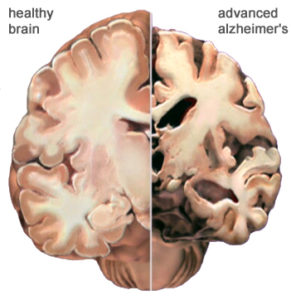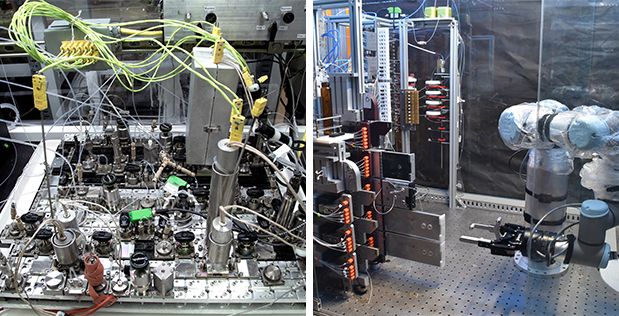Page 2886
Jun 26, 2018
Possible anti-aging intervention
Posted by Manuel Canovas Lechuga in categories: biotech/medical, life extension
“I am extremely excited about the research involved in the current Scientific Reports article,” said Joseph I. Shapiro, M.D., senior author and dean of the Joan C. Edwards School of Medicine. “I believe that our team has not only implicated the NAKL discovered by our colleague, Dr. Zijian Xie, in the aging process but identified a novel therapeutic target as well as a specific pharmacological strategy to actually slow the aging process. Although it will be some time before we can test these concepts in human subjects, I am cautiously optimistic that clinical therapeutics will ultimately result.”
The team’s extensive year-long study first focused on aging mice who were given a western diet to stimulate oxidant stress to antagonize the NAKL. The western diet increased the functional and structural evidence for aging; however, the introduction of pNaKtide slowed these changes in the mice. The same results were then replicated when human dermal fibroblasts were exposed to different types of oxidant stress in vitro by stimulating the NAKL, increasing expression of senescence markers, and causing cell injury. With pNaKtide treatment, the researchers demonstrated that the negative attributes associated with aging were significantly dampened.
“Our data clearly suggest that the Na/K-ATPase oxidant amplification loop is intimately involved in the aging process and, if confirmed in human studies, might ultimately serve as a therapeutic target,” said first author Komal Sodhi, M.D., an associate professor of surgery and biomedical sciences at the Joan C. Edwards School of Medicine. “If the pNaKtide can be safely used in humans, it might be possible to study the applicability of that specific agent to the problem of clinical aging.”
Jun 26, 2018
How Tech Companies Are Trying to Disrupt Terrorist Social Media Activity
Posted by Genevieve Klien in categories: internet, terrorism
Google, Facebook, Twitter and Microsoft formed the Global Internet Forum to Counter Terrorism last year to prevent terrorists from exploiting their services.
- By Stuart Macdonald, The Conversation US on June 26, 2018
Jun 26, 2018
New CRISPR-Gold technique reduces behavioral autism symptoms in mice
Posted by Genevieve Klien in categories: bioengineering, biotech/medical, genetics, habitats, neuroscience
A remarkable new study has successfully used the CRISPR-Cas9 gene editing technique to edit a specific gene in mice engineered to have fragile X syndrome (FXS), a single-gene disorder often related to autism. The single gene edit in the live mice resulted in significant improvements in repetitive and obsessive behaviors, making this the first time gene editing has been used to effectively target behavioral symptoms related to autism spectrum disorder (ASD).
FXS is a genetic disorder associated with intellectual disability, seizures and exaggerated repetitive behavior. Previous studies have shown that the repetitive behaviors associated with FXS are related to a specific excitatory receptor in the brain that, when dysregulated, causes exaggerated signaling between cells.
The CRISPR technique homes in on the gene that controls that excitatory receptor, the metabotropic glutamate receptor 5 (mGluR5), and essentially disables it, dampening the excessive signaling the corresponds with repetitive behaviors. In mice treated with the new system, obsessive digging behavior was reduced by 30 percent and repetitive leaping actions dropped by 70 percent.
Continue reading “New CRISPR-Gold technique reduces behavioral autism symptoms in mice” »
Jun 26, 2018
Experimental Drug Injection Causes the Brain to Grow New Neurons
Posted by Nicholi Avery in categories: aging, bioengineering, neuroscience
For the first time ever researchers have had a breakthrough in creating a cocktail of drugs that caused new neurons to grow in the brains of mice.

In my last article I gave a detailed account on the debate of neurogenesis. While some neuroscientists claim that neurogenesis takes place within the adult mammalian human brain other researchers contest that idea claiming that new neurons stop developing at a very young age. Whichever side of the debate you are on one thing remains certain, that there are neurological diseases that leave negative impacts on cognitive function. This has left researchers looking for various ways to treat Alzheimer’s, Parkinson’s, and other brain damage.

Continue reading “Experimental Drug Injection Causes the Brain to Grow New Neurons” »
Jun 26, 2018
Buzz Aldrin shares his latest space vision even as questions swirl about his state of mind
Posted by Genevieve Klien in category: space travel

Buzz Aldrin wants people to know that he has some cool new ideas about how to get to the moon — not just because they’re cool, but also because they show his mind is working.
“That’s not an inactive, incapacitated, dependent mind,” the 88-year-old Aldrin, who became one of the first humans to walk on the moon during 1969’s Apollo 11 mission, told me today during a wide-ranging telephone interview.
Jun 26, 2018
Can you weigh the world? Revolutionary experiments in physics
Posted by Genevieve Klien in category: physics
Some go to great lengths to understand the world around us – here are three extraordinary experiments from the history of science.
Jun 26, 2018
The Right Chemistry, Fast: Employing AI and Automation to Map Out and Make Molecules
Posted by Klaus Baldauf in categories: biotech/medical, chemistry, military, robotics/AI, space travel
Chemical innovation plays a key role in developing cutting-edge technologies for the military. Research chemists design and synthesize new molecules that could enable a slew of next-generation military products, such as novel propellants for spacecraft engines; new pharmaceuticals and medicines for troops in the field; lighter and longer-lasting batteries and fuel cells; advanced adhesives, coatings and paints; and less expensive explosives that are safer to handle. The problem, however, is that existing molecule design and production methods rely primarily on experts’ intuition in a laborious, trial-and-error research process.
DARPA’s Make-It program, currently in year three of a four-year effort, is developing software tools based on machine learning and expert-encoded rules to recommend synthetic routes (i.e., the “recipe” to make a particular molecule) optimized for factors such as cost, time, safety, or waste reduction. The program seeks to free chemists so that they may focus their energy on chemical innovation, rather than testing various molecular synthesis pathways. The program also is developing automated devices that uniformly and reproducibly create the desired chemical based on the software-generated recipe – this one-device, many-molecules concept is a departure from the traditional dedicated reactors in chemical production. Make-It research teams have recently demonstrated significant progress toward fully automated rapid molecule production, which could speed the pace of chemical discovery for a range of defense products and applications.
“A seasoned research chemist may spend dozens of hours designing synthetic routes to a new molecule and months implementing and optimizing the synthesis in a lab,” said Anne Fischer, program manager in DARPA’s Defense Sciences Office. “Make-It is not only freeing chemists to expend brain power in other areas such as molecular discovery and innovation, it is opening chemical synthesis and discovery to a much broader community of scientific researchers who will benefit from faster development of new molecules.”
Jun 26, 2018
China’s hypersonic military projects include spaceplanes and rail guns
Posted by Klaus Baldauf in categories: drones, military, space travel
China’s hypersonic progress ranges from increasing scramjet testing and cheaper drones, to keeping its lead in railguns.















